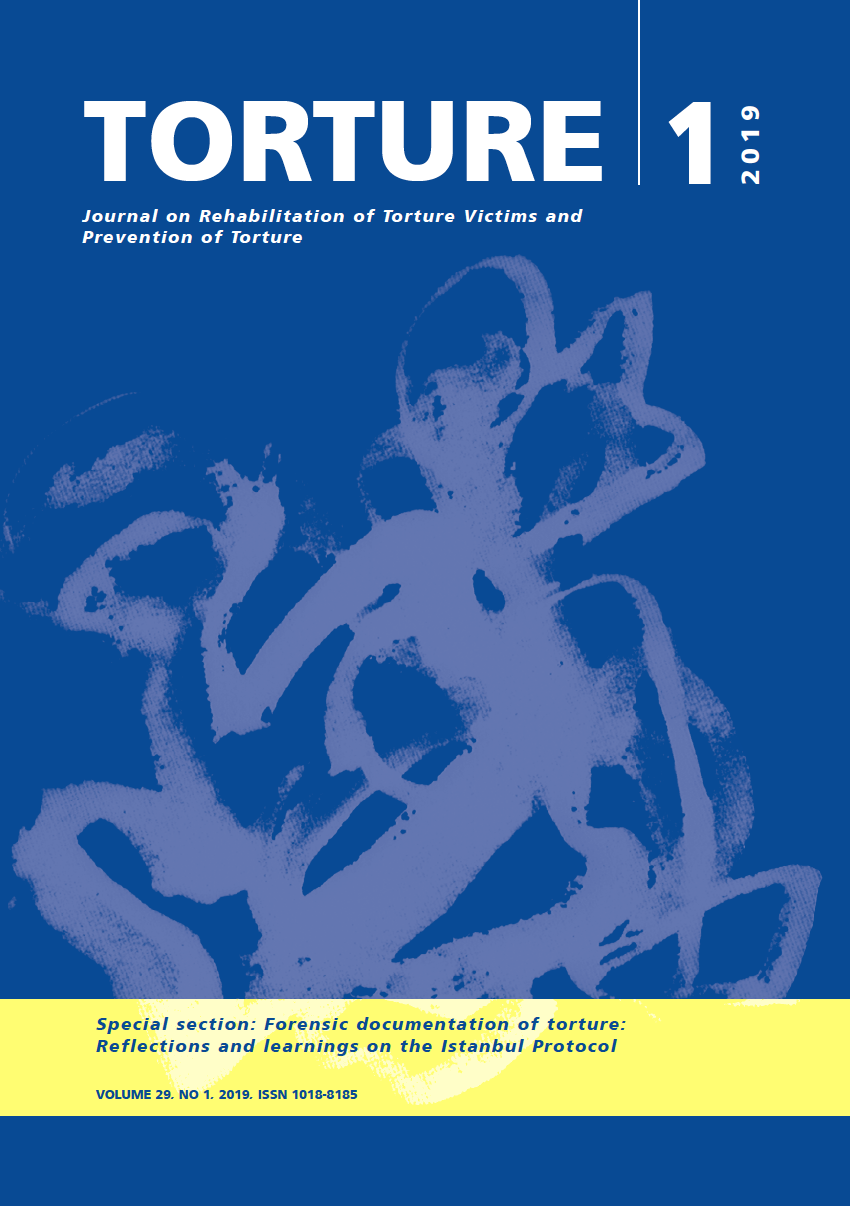The role of a trauma-sensitive football group in the recovery of survivors of torture
DOI:
https://doi.org/10.7146/torture.v29i1.106613Palabras clave:
torture survivors, sports therapy, football, programme model, refugeesResumen
Introduction: Whilst there is some preliminary evidence for the benefits of sports-related interventions for survivors of torture, how sport and exercise can contribute to the rehabilitation of torture survivors needs to be better understood. Specifically, this paper aims to: 1) explore the ways in which a football group contributed to the wellbeing of participants and; 2) suggest characteristics of the football group which could potentially contribute to its effectiveness. Methods: An exploratory mixed methods study was undertaken with participants and trainers of a joint programme delivered by Arsenal Football Club and Freedom from Torture in London. Individual discussions, group discussions and participatory ranking activities were used which led to the development of an initial programme model. This model was, subsequently, further developed through a variety of data collection methods. Results: Six potential outcomes of involvement in the football group were identified: relationships, a sense of belonging, hope for the future, emotion management, enjoyment, and improved physical health. In addition, the process highlighted factors contributing to the effectiveness of the football group: a sense of safety, therapeutic aims, similar participants, a partnership approach, staff characteristics, other opportunities, and consistency in terms of approach, session content and staff. Conclusions: This exploratory study outlines the potential benefits of the football programme that would require further validation through a case-control study and participant follow-up. A model is put forward as well as a number of recommendations that serve as a starting point for similar programmes and guides academic research in the area.
Citas
Ager, A., Bancroft, C., Berger, E., & Stark, L. (2018). Local constructions of gender-based violence amongst IDPs in northern Uganda: analysis of archival data collected using a gender- and age-segmented participatory ranking methodology. Conflict & Health, 12(10). http://dx.doi.org/10.1186/s13031-018-0140-6
Boyles, J. (2017). Psychological therapies for survivors of torture Monmouth: PCCS Books.
Coalter, F., & Taylor, J. (2010). Sport-for-development impact study. Stirling, U.K.: Department of Sport Studies, University of Stirling.
Dutton, C. (2017) Creating A Safe Haven: A community-based, creative approach to working with refugee and asylum-seeking families and young people affected by torture. In J. Boyles (Ed.), Psychological therapies for survivors of torture (pp. 271-287). Monmouth: PCCS Books.
Herman, J. (1992). Trauma and Recovery. New York: Basic Books.
Kira, I. A. (2002). Torture assessment and treatment: The wraparound approach. Traumatology, 8(2), 54-86. http://dx.doi.org/10.1177/153476560200800203
Ley, C., Krammer, J., Lippert, D., & Rato Barrio, M. (2017). Exploring flow in sport and exercise therapy with war and torture survivors. Mental Health and Physical Activity, 12, 83–93. http://dx.doi.org/10.1016/j.mhpa.2017.03.002
Ley, C., Rato Barrio, M., & Koch, A. (2018). “In the sport I am here”: Therapeutic processes and health effects of sport and exercise on PTSD. Qualitative Health Research, 28(3) 491–507. http://dx.doi.org/10.1177/10497323177445
Lykes, B., & Crosby, A. (2014). Creativity as an intervention strategy with Mayan women in Guatemala. Intervention: Journal of Mental Health and Psychosocial Support in Conflict Affected Areas, 12, 30-42. http://dx.doi.org/10.1097/WTF.0000000000000021
Rogers, P. J. (2008). Using programme theory to evaluate complicated and complex aspects of interventions. Evaluation, 14(1), 29-48. http://dx.doi.org/10.1177/1356389007084674
Rosenbaum, S., Vancampfort, D., Steel, Z., Newby, J., Ward, P. B., & Stubbs, B. (2015). Physical activity in the treatment of post-traumatic stress disorder: A systematic review and meta-analysis. Psychiatry Research, 230, 130–136. http://dx.doi.org/10.1016/j.psychres.2015.10.017
Rothschild, B. (2000). The body remembers: The psychophysiology of trauma and trauma treatment (Vol. xvi). New York: W. W. Norton.
Van der Kolk,B. (2014). The body keeps the score: Mind, brain and body in the transformation of trauma. London: Penguin Books.
Williams, A. C. de C., & van der Merwe, J. (2013). The psychological impact of torture. British Journal of Pain, 7(2) 101-106. http://dx.doi.org/10.1177/2049463713483596
Descargas
Archivos adicionales
Publicado
Cómo citar
Número
Sección
Licencia
We accept that some authors (e.g. government employees in some countries) are unable to transfer copyright. The Creative Commons Licence Attribution-NonCommercial-NoDerivatives 4.0 International (CC BY-NC-ND 4.0) covers both the Torture Journal and the IRCT web site. The publisher will not put any limitation on the personal freedom of the author to use material contained in the paper in other works which may be published, provided that acknowledgement is made to the original place of publication.


